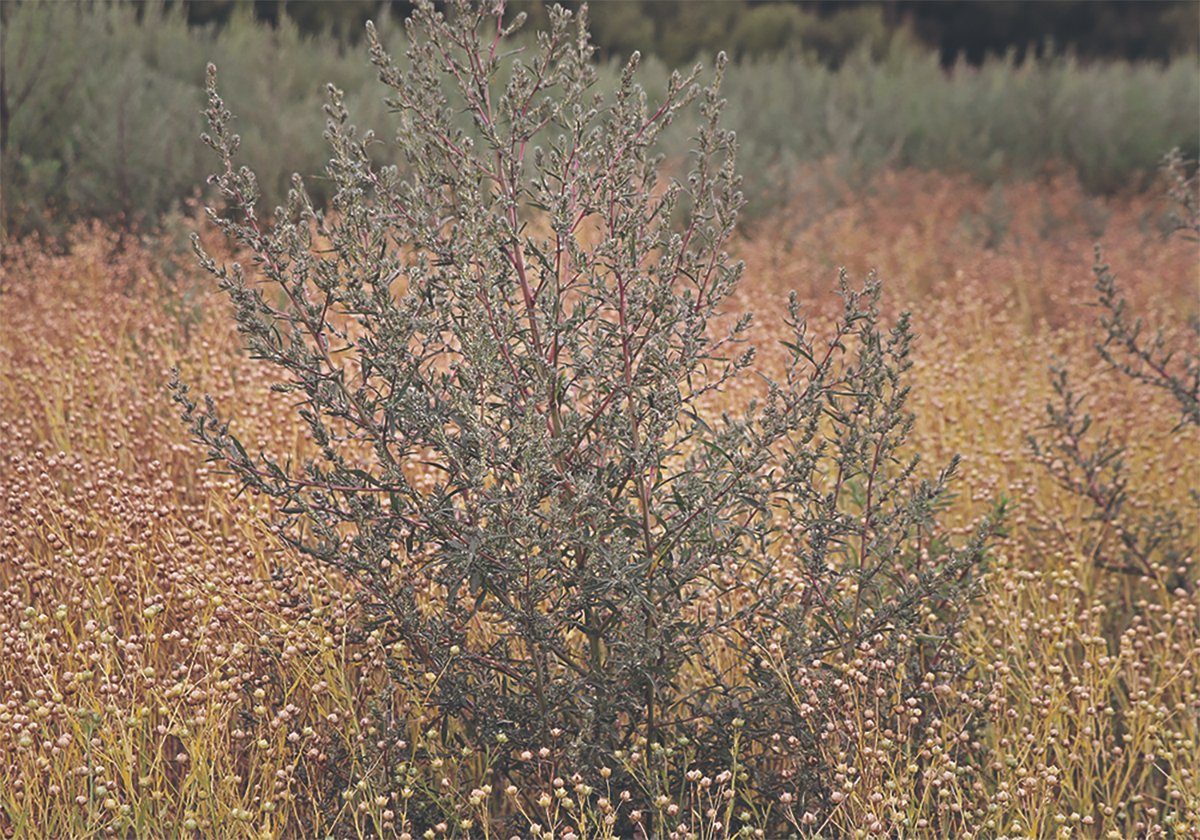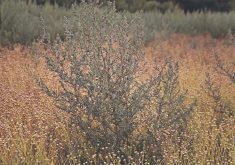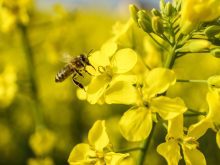Planning for the future
Our twin boys, Ray and Mike, are in Grade 12 this year. As a result we have been having lots of discussions about their future plans.
To explore the possibilities and to discover what they are interested in they have attended open house days at post-secondary institutions and have browsed through college calendars. They have also talked to friends, teachers and relatives about career ideas.
The need for post-secondary education is evident when you read statistics that indicate the unemployment rate for high school graduates is 15 percent while for university graduates it is four percent. This may give the perception that everyone needs to have a university education to ensure employment. This is not necessarily true. Statistics are showing there is and will be a growing need for tradespeople, especially in smaller communities.
Read Also

Kochia has become a significant problem for Prairie farmers
As you travel through southern Saskatchewan and Alberta, particularly in areas challenged by dry growing conditions, the magnitude of the kochia problem is easy to see.
As a friend of mine says “it doesn’t matter how many computers he has, when Bill Gates has a backed-up toilet he still needs a plumber.” The opportunities for those who have an aptitude for working with their hands and equipment include building and repairing computers, home construction, cabinetry, plumbing, heating and electrical work. By comparison a university degree does not always train you for a specific job, rather it is a way to train your mind to explore ideas, and to question and learn. To be successful at university, an individual needs to have an aptitude for books, writing and test taking, as the learning process is based on rigorous academic work.
If you know young people who are approaching the end of high school, encourage them to explore their interests through school guidance career tests and in discussions with friends and family.
If they make a list of all the activities and jobs they have been involved in at school and in the community, it may help them to identify what they enjoyed, what areas they would like to explore more or what areas they definitely don’t want to do. This list will also be handy for creating a resume or filling in application forms.
The cost of post-secondary schooling is a major concern for students and parents. There are numerous scholarships and bursaries available for students. Many are not based solely on academic standing but include financial need and/or the student’s activities, and/or parents’ or grandparents’ membership in community or professional organizations. A well-prepared application completed by the student can be worth the effort.
A good source of information about post-secondary institutions and their programs is the internet. We have found the following website useful for checking out Canadian schools and their programs, as well as a source of information for scholarships and application suggestions, www.sk.sympatico.ca/Contents/University_Bound/.
The greatest help that a parent can provide a young person at this stage is the promise of support and encouragement. The student lived up to what was expected of them because they knew they had their family’s support, be that emotional, physical or financial.
Dryer repairs
Dear TEAM: In December a person from Brooks, Alta. was inquiring about Scharpf spin dryer repairs. The following is the address for a repair place in Regina. It seems these machines come from Germany: Strada Enterprises Ltd., 3806 Albert Street (The Golden Mile Plaza), Regina, Sask., 306-585-1940. – D.R., Imperial, Sask.
Dear Readers: Thank you to the several readers who sent in information about these spin dryers. I called Strada Enterprises and it does have parts and does repair work on these machines. The Scharpf spin dryer was made in Germany but is no longer manufactured. Parts are still available.
More pulse recipes
Dear TEAM: My wife would like to know how she should cook all kinds of peas, lentils and beans that are farm grown. We would like other recipes than soup. – J.M., Landis, Sask.
Dear TEAM: I like to cook my one specialty, ham and white beans. How do I go about canning this? – T.A., Saskatoon, Sask.
Dear Readers: Peas, beans and lentils are continuing to grow in popularity because of their many uses in recipes, their nutrient content and economic value. Dried peas, beans, lentils and chickpeas are often referred to as pulses. They are low in fat and are good sources of protein, starch and fibre and contain significant amounts of potassium, B vitamins and iron.
Pulses can be served plain with butter or margarine or in subtle sauces. They can be mashed and seasoned, used as a vegetable dish to accompany meat or casseroles, added to meat loaves, taco filling and patties as a meat stretcher or put in salads.
The home canning of beans, peas and lentils is not recommended as they are low acid foods. Low acid foods must be processed at a temperature of at least 240 F (116 C) to destroy clostridium botulinum spores. This temperature is higher than that of boiling water and can only be achieved in a pressure canner.
Beans, peas and lentils all freeze well so this is an easier and safer way to preserve individual servings for future meals. They can be quickly thawed and reheated in the microwave or in a double boiler.
The best source I have found for recipes is the Saskatchewan Pulse Crop Development Board. It has two cookbooks and numerous pamphlets available. You can order them c/o Food Focus Saskatoon, A5A – 116 – 103rd Street East, Saskatoon, Sask., S7N 1Y7, 306-652-2691, fax 306-664-4404, e-mail: foodfocus@quadrant.net.
The following is a tasty dish that can be added to almost any meal. It is taken from the Discover The Pulse Potential cookbook produced by the board.
Multi-grain pilaf
1 medium onion, chopped 1
1 tablespoon canola oil 15 mL
1Ú2 cup Eston lentils 125 mL
1Ú2 cup sliced almonds 125 mL
1Ú2 cup wild rice 125 mL
1Ú2 cup brown rice 125 mL
1Ú2 cup pot barley 125 mL
2 chicken bouillon cubes 2
41Ú2 cups hot water 1.125 L
1 teaspoon Mrs. Dash 5 mL
table blend seasoning*
2 tablespoons 25 mL
cooking sherry
Preheat oven to 180 C (350F).
SautŽ onion in oil until onion is translucent. Add lentils, almonds, the two rices and barley. Stir until slightly browned.
Dissolve chicken bouillon cubes in hot water and add to lentil mixture. Add seasoning and sherry.
Pour into a two quart (two litre) casserole. Cover and bake 11Ú4 hours.
This recipe makes 12 servings and freezes well.
- Mrs. Dash is a salt-free blend of herbs and spices. Substitute seasoned pepper and/or dried crumbled oregano, thyme, parsley, basil and savory to your taste.
Low-floor buses
Recently I noticed one of these buses in Saskatoon and then I read this item in the Association of Saskatchewan Home Economics Newsletter.
“Steps and curbs are no longer a problem for passengers using easy access buses. Each bus is equipped with a low-angle ramp at the front doors, which can be extended to the sidewalk or curb, providing accessibility for anyone using wheelchair, motorized scooter, or other mobility device or stroller.
“The buses have areas at the front which can accommodate two wheelchairs or scooters. Passengers remaining in wheelchairs or scooters can be secured using a specially designed seatbelt system.
“Low-floor buses are operating in Regina and Saskatoon and other Canadian cities including Winnipeg and Calgary.”
Congratulations to Jodie and Rod
We would like to welcome a new member to our TEAM Resources family as Jodie and Rod Mirosovsky are the proud parents of another son and brother for Carter. Skylar Alexander was born March 2.
















